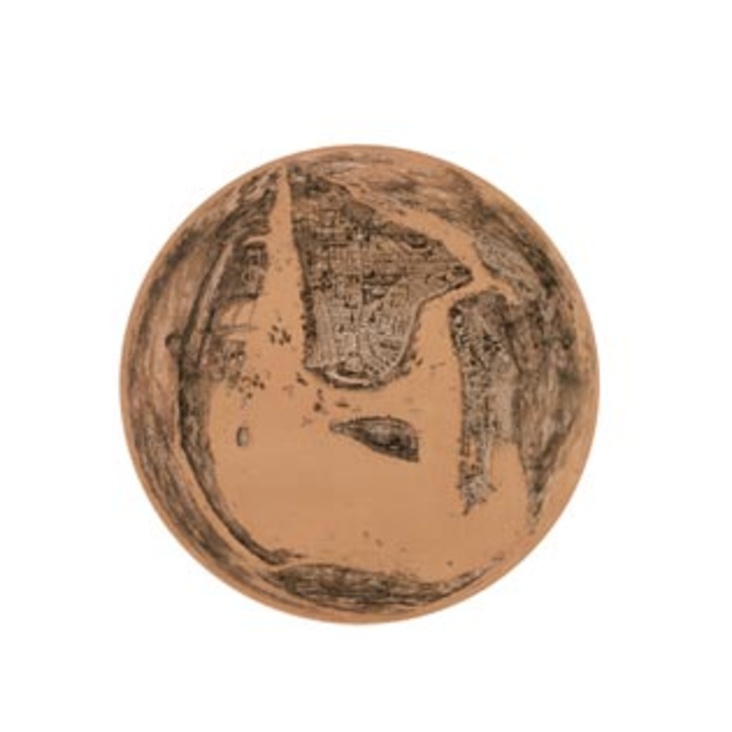This lecture was originally delivered on Thursday, April 24, 2014 as part of the Seminar Series, Conservation Conversations.
In the above video Judith Olszowy-Schlanger and Michelle Chesner discuss “Case Study in Collaboration: Conserving Thousands of Lost Medieval Hebrew Manuscripts.”
Conservation Conversations are public research dialogues pairing a conservator and a professor and exemplifying the goal of “Cultures of Conservation,” a five-year curricular initiative funded by the Andrew W. Mellon Foundation. For more information, visit http://cultures-of-conservation.wikis.bgc.bard.edu/.
- 00:01—Opening Remarks, Cultures of Conservation Fellow, Hanna Hölling
- 5:00—Speaker Introductions, Cultures of Conservation Fellow, Gabrielle Berlinger
- 11:51—Lecture with Judith Olszowy-Schlanger
- 49:31—Lecture with Michelle Chesner
- 1:30:00—Panel Discussion with Audience Q&A
Judith Olszowy-Schlanger is Directeur d’Études in the Historical and Philological Sciences Section of the École Pratique des Hautes Études (EPHE). She received a Maîtrise d’hébreu modern from the Institut National des Langues et Civilisations Orientales in Paris, a Diplôme en langues sémitiques anciennes from the Ecoles des Langues Orientales Anciennes at the Institut Catholique in Paris, a PhD from the Faculty of Oriental Studies at the University of Cambridge, and a Habilitation à Diriger des Recherches from Université Paris IV. Olszowy-Schlanger’s research interests include Hebrew manuscripts, paleography and diplomatic Hebrew, the history of medieval linguistic thought, the Cairo Geniza, and Hebrew-Christians in the Middle Ages. Her publications include Dictionnaire hébreu-latin-français de la Bible hébraïque de l’Abbaye de Ramsey (XIIIe s.), co-editor, Anne Grondeux (Turnhout: Brepols, 2008); Les revues scientifiques d’études juives: passé et avenir : à l’occasion du 120e anniversaire de la “Revue des études juives”: actes de la table ronde de Paris 13-14 novembre 2002, co-editor, Simon Claude Mimouni (Paris-Louvain; Dudley, MA: Peeters, 2006); Les manuscrits hébreux dans l’Angleterre médievale: étude historique et paléographique (Paris; Dudley, MA: Peeters, 2003); The Karaite Tradition of Hebrew Grammatical Thought in its Classical Form. A Critical Edition and English Translation of al-Kitab al-Kafi fi al-Lugha al- ‘Ibraniyya by Abu’l Faraj Harun ibn al-Faraj (Leiden; Boston: Brill, 2003); and Karaite Marriage Documents from the Cairo Geniza: Legal Tradition and Community Life in Mediaeval Egypt and Palestine (Leiden; New York: Brill, 1998).
Michelle Chesner is the Norman E. Alexander Librarian for Jewish Studies at Columbia University. She received a BA in History from the University of Maryland, Baltimore County, an MA in Hebrew and Judaic Studies from New York University, and an MLIS with a Certificate in Rare Books and Special Collections from Long Island University. Prior to her current position, she was the Judaica Public Services Librarian and Archivist at the Katz Center for Advanced Judaic Studies at the University of Pennsylvania. Her most recent exhibition at the Columbia University Library was “The People in the Books: Hebrew Manuscripts from Columbia University Libraries” (September 2012-January 2013).
Written modes of communication shaped institutions and had lasting influence on Jewish religious, cultural, and economic life in medieval Europe. The main tangible monuments of the Jewish past, books and documents, however, have had an eventful history, and only a small proportion of the manuscripts written in the Middle Ages are still in existence. An unprecedented source is the fragments of medieval manuscripts preserved by chance in book bindings and wrappers of notarial files to be found in various libraries, archives, museums and collections across Europe. Once out of use, either worn out by usage and time, or as victims of planned confiscations and destruction, medieval Hebrew manuscripts had sometimes ‘a second life’ as recycled material for the production and protection of other books. The parchment and, more rarely, paper sheets from old manuscripts were commonly sold at the market and used by medieval and early modern bookbinders to cover other volumes, to make the flyleaves and protective linings between the binding and the book itself, to manufacture cardboard “files” to sort out documents and legal acts or, cut into narrow stripes, to protect the new parchment from tear in the fragile places where the sheets are stitched together.
Since 2009, this phenomenon of recycled Hebrew manuscripts has been studied by the international research network “Books within Books.” Some 20,000 fragments of Hebrew manuscripts have been identified so far across Europe. Absent from the catalogues, hidden in the bindings of the Latin or vernacular books where nobody would look for Hebrew sources, often unknown to the librarians themselves, these fragments are today in urgent need of systematic research, description and conservation. Medieval Hebrew fragments are also present in American libraries. In the case of the collection of fragments at Columbia University, many were actually cataloged and described as part of a general description of the entire Hebrew manuscript collection. Using Columbia’s fragments to provide examples, this talk will demonstrate the importance of this collaborative research between conservators and historians.



